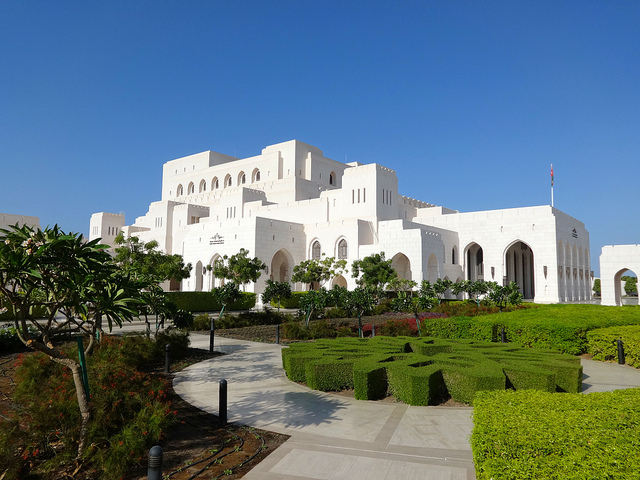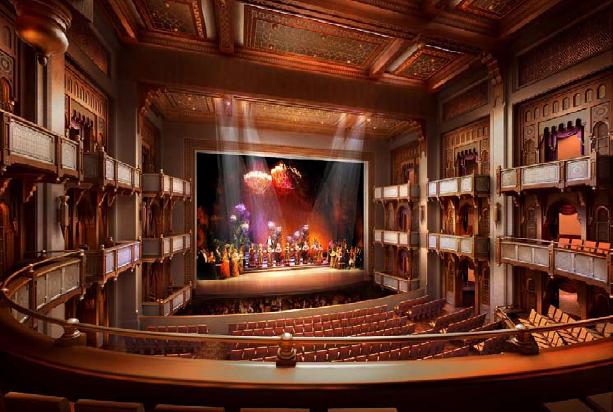
Royal Opera House Muscat
LONDON—International destination design firm WATG has revealed their architectural designs for the Royal Opera House in Muscat, Oman. This unique venue can be formatted as a 1,000-seat concert hall for musical performances or reduced in seating capacity for dramatic and operatic productions. A select group of international design firms were invited by the Royal Court Affairs of the Sultanate of Oman to compete for the design of the project in 2003, and after a number of competitive stages, WATG won the international design competition and were invited to lead the team for the complete design and supervision services. This included master planning, architecture, interior design and landscape architecture, as well as design management of the decorative lighting, kitchen design, graphics, signage, all engineering services and acoustic design consultants.
The architecture of the Royal Opera House is sympathetic to the grand style of modern Omani public buildings. It uses traditional forms of colonnades, terraces and sculptural tower forms, and is finished in locally-sourced light coloured stone and complementary stucco.
One of the distinctive features of the project is that the concert hall’s shell is a mobile structure that can be detached to allow an adjustable proscenium to drop into place to create a traditional theatre format. The building design has evolved with these large moving structures to create a unique adaptable volume, which gives the venue unparalleled natural acoustic potential. The eight hectare site is being developed as the start of a new urban quarter with a formal landscaped park, a cultural souk with museums, retail and coffee shops, and a villagesquare. Construction commenced on the superstructure in April 2007.
His Majesty the Sultan opened Royal Opera House 12 October 2011.

Dress Code for the Opera House
Royal Opera House Muscat
P. O. Box 35 P.C. 103
Bareeq Al Shatti
Sultanate of Oman
Tel: +968 24 403300
Box Office: line 1: +968 2440 3332
for programmes, premieres visit web
